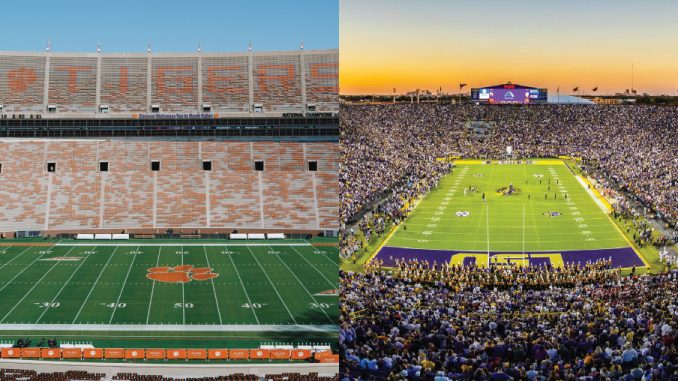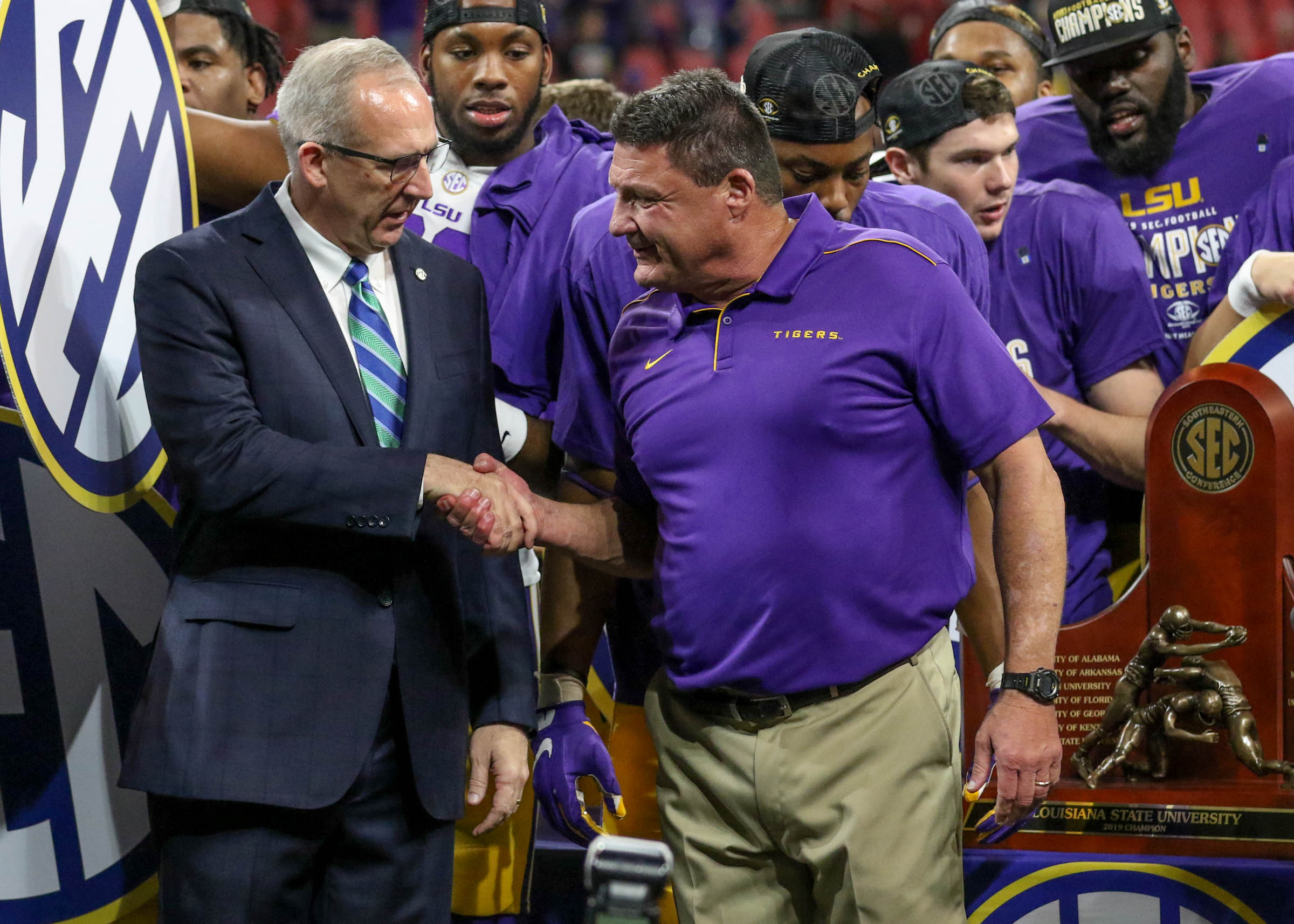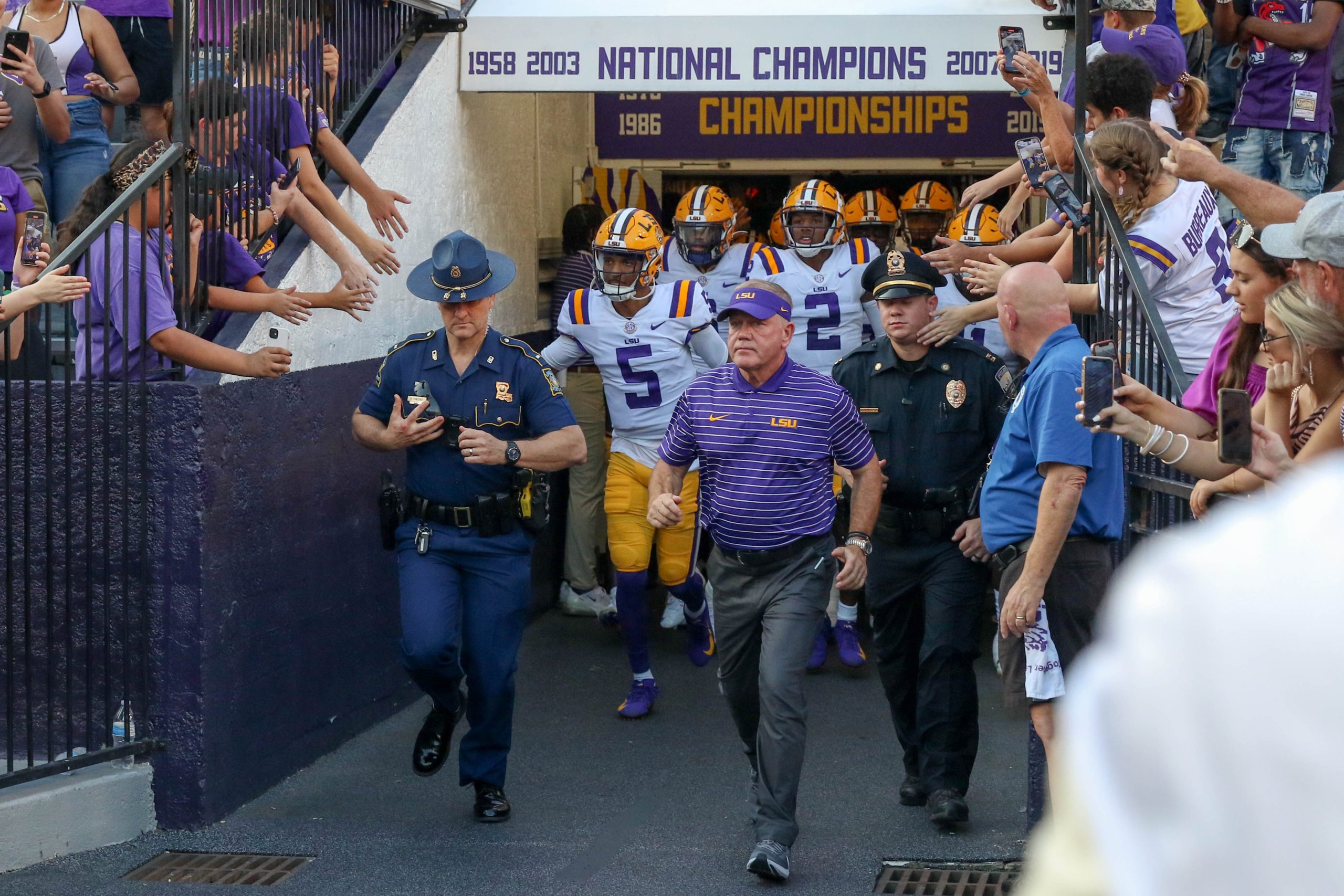
By ANDRE CHAMPAGNE, Tiger Rag Staff Reporter
Not only is No. 9 LSU kicking off the 2025 season at No. 9 Clemson Saturday (6:30 p.m., ABC) in one of the biggest openers anywhere, this game also spotlights two stadiums of the same name – LSU’s Tiger Stadium, which is called “Death Valley,” and Clemson’s Memorial Stadium, also called “Death Valley.”
LSU coach Brian Kelly already poured some gasoline on the stadium duel over the summer at a speech to the Baton Rouge Rotary Club.
“You need those championship traits when you’re on the road, when you’re at Death Valley, Junior,” Kelly cracked.
Kelly fed the Clemson program bulletin board material, leading to star Clemson defensive end TJ Parker biting back.
“They can have their opinion. We’re going to handle all that on August 30,” he said. “At the end of the day, we can do all the talking, we still got to play. So, we’re going to see. They’re hyping up everybody across the board, all these transfers they got — we’ll see.”
So, we decided to compare the history of the two stadiums to help settle the debate.
STADIUM CAPACITY
– Tiger Stadium- 102,321
– Memorial Stadium – 81,500
TIGER STADIUM OPENING, MAJOR RENOVATIONS
– Tiger Stadium opened in November of 1924. Originally there were 12,000 seats. Major renovations occurred in 1931, 1936, 1953, 1978, 1988, 2000, 2014, and 2020.
– 1924: Original construction of the east and west sidelines of Tiger Stadium was completed.
– 1931: East and West sideline expansion extended upwards for additional 10,000 fans that increased capacity to 22,000.
– 1936: Stadium seating capacity increased to 46,000 with addition of 24,000 seats in north end zone, shaping Tiger Stadium like a horseshoe.
– 1953: Stadium capacity raised to 67,720 with completion of south end, shaping stadium like a bowl.
– 1978: West upper deck construction completed with 10,000 more seats bringing capacity to 78,000. New press box and club seats added.
– 2000: East upper deck construction completed, adding 11,600 seats to bring capacity to 92,000. And 70 luxury sky boxes added.
– 2014: South end zone expansion creates 66 suites, approximately 3,000 club seats as well as 1,400 general public seats to bring capacity to current 102,321, making it the fifth-largest stadium in the nation.
MEMORIAL STADIUM OPENING, MAJOR RENOVATIONS
– Memorial Stadium opened in September of 1942 with 20,000 seats.
– 1958: 18,000 sideline seats added.
– 1960: 5,658 west end zone seats added after previous additions for 53,000 capacity.
– Upper decks added to each side in 1978 and 1983, increasing capacity to over 80,000.
– 2006: More than 1,000 seats added to west end zone with luxury seats and new locker rooms and offices.
WHEN DID EACH SCHOOL CLAIM THE NICKNAME “DEATH VALLEY”
– Clemson started to use “Death Valley” in 1948 after Presbyterian head coach Lonnie McMillian called Memorial Stadium “Death Valley” after being blown out 53-0. After that, the name grew more popular when legendary Frank Howard, who was Clemson’s head coach from 1940-69, was gifted a rock from the Mojave Desert – another “Death Valley” – in California. The rock has long been referred to as “Howard’s Rock” and is located at the top of The Hill, where Clemson players make their entrance every home game.
– LSU fans referred to Tiger Stadium as “Death Valley” for years, but it is unclear when that started. But on Jan. 1, 1959, the nickname became locked in by LSU after fans after the No. 1 Tigers and superstar tailback Billy Cannon defeated No. 12 Clemson, 7-0, in the Sugar Bowl in New Orleans to complet an 11-0 season as national champions.
HOME RECORD
– LSU – 457-157-18 (.723 winning percentage)
– Clemson – 345-106-7 (.753 winning percentage)
Although Clemson has a better winning percentage in their home stadium, LSU has played 174 more home games and has 112 more home wins.




Be the first to comment